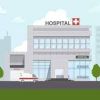Directory
Base Hospitals - Kebithigollewa
he impact that the Dutch had on the local medicine was only a fraction more than in the case of the Portuguese. They built more hospitals than the Portuguese, and that again was for the purpose of serving their forces, shipping personnel and other Dutch nationals in the country. Hospitals were established in strategic garrison towns, several of which possessed harbours as well. The British captured the maritime provinces from the Dutch in 1796, and annexed the Kandyan kingdom in 1815. They ruled the country till 1948 when Sri Lanka achieved independence. The early phase of British medicine belonged to the military who controlled both the military and civil health institutions. With the creation of a separate Civil Medical Department in 1858, a new phase was born by which medical facilities were provided to the civilian by a department free of military control. The British were very much concerned about the health of the local population. Several Governors, in their addresses to the Legislative Council, indicated their solicitude for the health of the people







